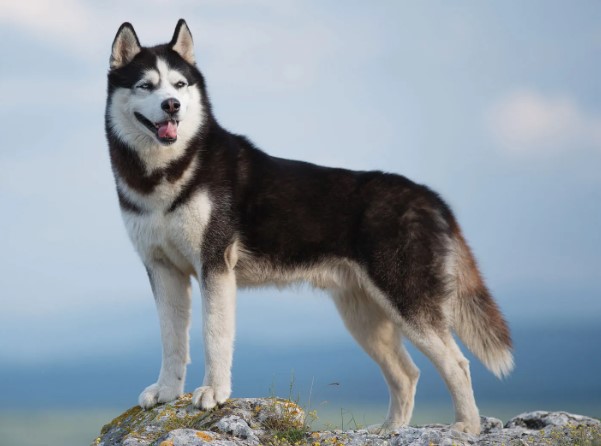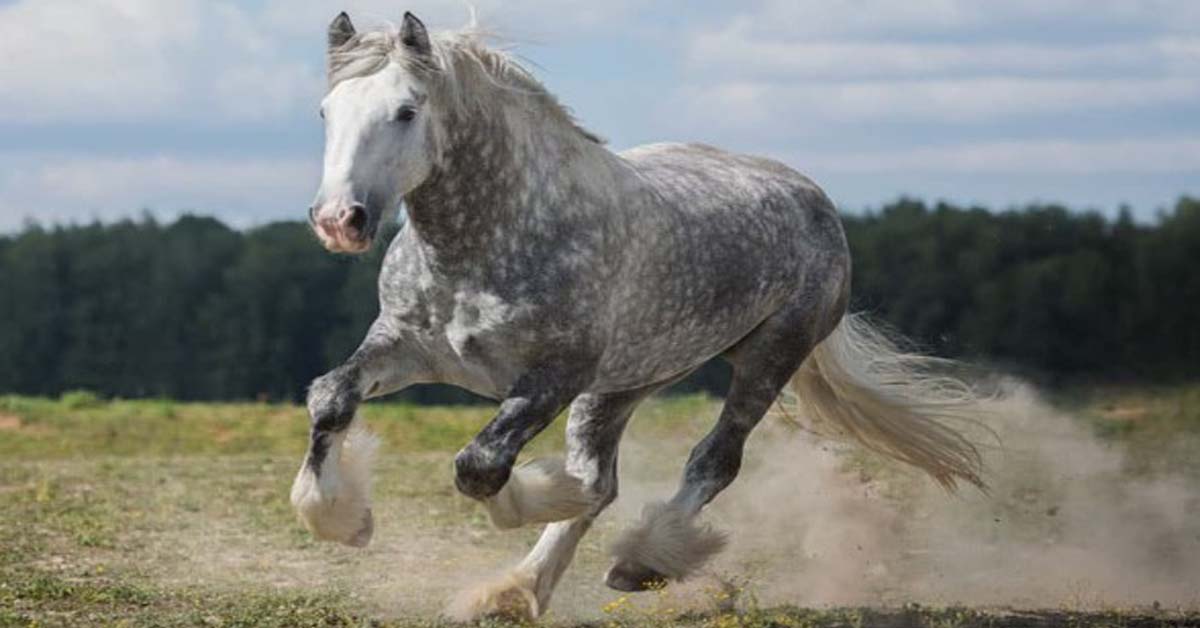The Maltipoo, a delightful mixed breed, is the result of crossing a Maltese with a Poodle. This “designer breed” aimed for petite size, utilizing a toy poodle as a parent to achieve this characteristic.
The term “designer breed” doesn’t signify a distinct breed but rather denotes a mixed-breed dog selectively bred to showcase desirable traits inherited from its parents.
In the case of the Maltipoo, breeders seek to combine the Poodle’s intelligence and the appealing features of both parent breeds with the playful nature of the Maltese. It’s essential to recognize that, like all dogs, mixed breeds such as the Maltipoo are unique individuals and may exhibit traits from one parent more prominently than the other.
When contemplating the addition of a Maltipoo to your family, researching the characteristics of its base breeds is advisable.
Maltese dogs are charming, energetic, and devoted companions. Families often choose them in the hope of having a dog with a hypoallergenic coat, although it’s crucial to understand that no dog is entirely hypoallergenic. Maltese dogs are known for shedding less than some other breeds, and they bring fierce loyalty, high trainability, and a wonderful presence to nearly any home.
The Maltipoo has garnered a variety of nicknames, including Malti-doodle, Malt-a-doodle, Maltidoodle, Maltedoodle, Malt-oddly, Malt-a-poo, Malta-poo, Malta poo, Maltese-poodle, male-poo, Maltipoo, Maltese-poodle, Maltesedoodle, or even Moodle!
Maltipoo Size Chart:
| Dog Breed Group: Hybrid Dogs | Height: 8 to 14 inches tall at the shoulder | Weight: 5 to 20 pounds | Life Span: 10 to 13 years |
History Of Maltipoo:
The Maltese is thought to have originated from the small island of Malta, situated south of Sicily, Italy. Over the centuries, these dogs earned the adoration of royalty and were considered esteemed members of royal families. The Maltese’s popularity steadily increased over the years, eventually making their way to America in the late 1800s.
The Standard Poodle has its roots traced back to 15th-century France. These dogs, with their distinctive curly coats, gained such favor during that era that they became recognized as the national breed of France. While it took nearly three centuries, Poodles began to gain popularity in other regions, including Spain. In the subsequent century, the Standard Poodle was selectively bred to yield the toy and miniature Poodle sizes we know today.
Though the Maltipoo is acknowledged as a recent poodle mix, pinpointing the exact time and place of its inception proves challenging. The creation of this mixed breed cannot be attributed to a specific individual or organization, and no one claims credit for the first puppy of this innovative mix.
Breed Characteristics of This Breed:
| Adaptability: 4 Points | Dog Friendly: 3 Points | Energy Level: 3 Points |
| Trainability: 3 Points | Exercise Needs: 4 Points | Affectionate: 5 Points |
| Grooming: 5 Points | Territorial: 2 Points | Watchdog Instincts: 5 Points |
| Apartment Friendly: 4 Points | Barking Tendencies: 3 Points | Cat Friendly: 5 Points |
| Child Friendly: 2 Points | Health Issues: 4 Points | Intelligence: 4 Points |
| Shedding Level: 2 Points | Social Needs: 5 Points | Stranger Friendly: 5 Points |
Appearance of Maltipoo:
Maltipoos typically don’t exceed a height of 14 inches, classifying them within the small dog category. Their weight can range from 5 to 20 pounds, and they boast a soft coat, often of medium to long length, with a wavy or curly texture.
Due to the diverse lineage of their parent breeds, Maltipoos can showcase a variety of colors, although white and cream are common. Predicting their appearance precisely can be challenging given their status as a designer breed. They may exhibit bicolor, tricolor, or even a marbled coat.
While no dog is truly hypoallergenic due to the production of allergy-inducing dander and saliva, Maltipoos, with their minimal shedding, limited salivation, and petite size, are less likely to trigger allergies in some individuals.
Some prospective owners seek out “Teacup Maltipoos,” a smaller version of the breed. However, caution is advised as the breeding process for these diminutive pups can be ethically questionable. It’s crucial to note that the AKC does not recognize teacup breeds, as smaller puppies often come with numerous health concerns. Since Maltipoos are already petite, consulting with a veterinarian before pursuing a “teacup Maltipoo” is recommended.
Dr. Adam Christman, a veterinarian in Brick, N.J., specializing in small animal medicine, emphasizes the potential issues associated with breeding dogs to “teacup” size. He notes that while pocket-sized dogs may be adorable, they can encounter problems such as severe dental issues, luxating patellas, and heart problems. These miniature dogs are more susceptible to pneumonia and upper respiratory problems, especially in young children. Dr. Christman advocates for educating prospective pet parents about the potential challenges associated with smaller breeds to set realistic expectations.

Maltipoo temperament:
The temperament of Maltipoos is truly exceptional. They exhibit gentleness, affection, a love for fun, and a cheerful demeanor. Whether contentedly observing life from their human’s lap or enthusiastically engaging in play, Maltipoos are adaptable and loving companions.
Marlene Kingston, a dedicated breeder and trainer at My Doodle Maltipus, holds profound admiration for each parent breed, contributing to the distinctive qualities of these hybrids.
“Each [Maltipu] possesses a robust personality and energy derived from the Poodle lineage, yet they also crave love and cuddles from their Maltese parentage,” notes Kingston.
Maltipoos remain vigilant and are quick to bark at anything suspicious, although aggression is not in their nature. With proper socialization during their puppyhood, they can establish harmonious relationships with almost anyone.
Personality of This Dog Breed:
This dog is an intelligent and affectionate companion, characterized by a joyful nature that easily establishes positive connections with everyone it encounters. Gentle and loyal, Maltipoos find contentment in lounging on their owner’s lap or strolling alongside them.
While they appreciate moments of calm and affection, Maltipoos can also exhibit an energetic and enthusiastic side, relishing play sessions as much as extended cuddle sessions. Their alertness makes them effective alarm dogs, although relying on them for security purposes may not be practical.
Similar to all dogs, Maltipoos benefit greatly from early socialization during their youth. Exposure to various people, sights, sounds, and experiences helps ensure the development of a well-rounded personality in your Maltipoo puppy.
Health Information About This Breed:
All dogs, regardless of whether they are purebreds, crossbreeds, or mixes, have the potential to develop genetic health issues, much like people can inherit certain diseases. Be cautious and avoid any breeder who does not provide health guarantees for their puppies—whether they claim a mixed breed is entirely problem-free or suggest their puppies are exempt from common health concerns. A trustworthy breeder will be transparent about health issues in mixed breeds and openly discuss incidents within their line.
While Maltipoos might be prone to health problems associated with both Maltese and Toy Poodles, the introduction of genetic diversity through crossbreeding may reduce the likelihood of certain hereditary diseases. The unpredictable nature of genetic variation makes it challenging to forecast health outcomes in mixed-breed dogs. Refer to breed guides on Maltese and Toy Poodles for insights into reported hereditary diseases in these breeds.
Recognizing that not all hereditary conditions are detectable in growing puppies, it becomes crucial to seek a reputable breeder dedicated to producing the healthiest animals. Reputable breeders should offer independent certification confirming that the dog’s parents underwent screening for genetic defects and are deemed healthy for breeding.
At the very least, request proof from the breeder that both the puppy’s parents possess appropriate certificates from health registries like the Orthopedic Foundation for Animals, Canine Eye Registry Foundation, etc. If a breeder attempts to sidestep genetic testing by claiming a lack of issues in their line or relying on vet checks, it is advisable to walk away.
How to Careful These Breeders?:
Responsible breeders meticulously assess their breeding dogs for genetic diseases, prioritizing the pairing of the healthiest and most aesthetically sound individuals. However, despite these careful breeding practices, unforeseen genetic issues can sometimes manifest in a puppy.
Fortunately, advancements in veterinary medicine have enabled dogs to lead fulfilling lives even when facing such conditions. When acquiring a puppy, inquire about the breeder’s knowledge regarding the longevity of dogs in their lineage and the causes of their demise.
Post-puppy adoption, it becomes your responsibility to shield your new companion from common health concerns, with obesity being a prevalent issue. Maintaining the optimal weight for a Maltipoo is crucial for extending its lifespan. Utilize a combination of a well-balanced diet and regular exercise to foster a healthy and vibrant life for your canine companion.
Health Issues About Maltipoo Dogs:
Prior to acquiring a Maltipoo, it’s advisable to familiarize yourself with potential health issues that may impact this breed. This knowledge will empower you to recognize signs and symptoms, aiding in determining whether a visit to the veterinarian is necessary.
One potential health concern for Maltipoos is patellar luxation. This condition occurs when the patella or kneecap is misaligned, leading to it slipping out of its normal position. Manifesting as lameness in the legs or a noticeable slouching while walking, patellar luxation may require surgical intervention for correction.

Caring Your Maltipoo:
Maltipoos are affectionate companions and are best suited for indoor living with their families, never relegated to outdoor spaces or kennels. They adapt well to apartment living, provided they receive daily exercise and are prevented from becoming excessive barkers.
Known for their intelligence, Maltipoos respond positively to training. Employ effective techniques such as positive reinforcement, incorporating food rewards, play, and praise, for swift success.
Their active nature necessitates daily exercise to maintain health and happiness while preventing potentially destructive behaviors stemming from excess energy. A mere 10 to 15 minutes of daily activity, whether in the form of short walks, play sessions in a secured yard, or indoor games like fetch, proves sufficient.
It’s worth noting that Maltipoos have a tendency to be vocal, particularly when detecting something or someone suspicious. Prospective owners, especially those in noise-regulated environments, should consider this characteristic before choosing a Maltipoo.
Coat Color And Grooming of This Dog Breed:
The Maltipoo boasts a coat that is both low-shedding and low-dander, characterized by a soft, woolly texture with a slight waviness to curls. Ranging from medium to long in length, the coat comes in various colors, with cream, white, and silver being among the more common shades.
To maintain the Maltipoo’s coat cleanliness and prevent matting, daily brushing is essential. Many Maltipoos undergo periodic clipping for a neat and cooling effect, typically requiring once or twice a year, while the head may need monthly trimming.
Regular bathing, around once a month, ensures the coat remains soft and clean, with additional attention to trimming hair around the eyes for a tidy appearance. Ears must be kept clean to prevent the accumulation of dirt, debris, and moisture.
Other grooming routines include dental care and nail maintenance. Brushing your Maltipoo’s teeth two to three times a week, preferably daily, helps eliminate tartar buildup and bacteria. Nail trimming should occur once or twice a month, with overly long nails indicated by a clicking sound on the floor. Regular trimming not only keeps the feet in good condition but also prevents scratching when your Maltipoo enthusiastically greets you.
Commence grooming practices when your Maltipoo is a puppy to acclimate them to the process. Regularly handle their paws, inspect their mouth and ears, and establish grooming as a positive experience filled with praise and rewards. This approach sets the foundation for smoother veterinary exams and handling in adulthood.
How to Train Your Maltipoo?:
When it comes to training, initiating the process early and maintaining consistency are crucial. It’s never too soon to commence training your puppy—ideally, begin on the day you bring your new companion home. Establishing positive habits from the outset lays the foundation for a well-behaved canine companion.
Devoting just fifteen minutes daily to training can quickly transform it into a routine for both you and your dog, with shorter sessions enhancing your dog’s focus. Remarkably, your puppy can swiftly grasp new commands and tricks with regular training.
If your puppy initially struggles to comprehend a command, consider shifting to another command for the day. Maltipoos respond well to positive reinforcement, so having rewards like treats or toys readily available can be beneficial in the training process.
How to Train to Exercise This Dog?:
Despite their small size, Maltipoos require daily exercise. Aim for a minimum of a 10- to 15-minute walk each day, engage in play sessions in a secure backyard, or provide toys for indoor play.
Insufficient exercise for your Maltipoo can lead to boredom, potentially resulting in undesirable behaviors and destructive tendencies. Therefore, ensuring that your pet’s exercise requirements are fulfilled is essential in preventing such issues.
The Best Dog Food for Maltipoos:
Tailored for small breeds, this dog food is abundant in protein and offers ample amounts of calcium and phosphorus to support robust bones and teeth. Additionally, the calcium and vitamin B6 content in this food play crucial roles in promoting a healthy nervous system, proper growth, and a strong immune system for Maltipoos.
Maltipoo Puppies:
Prepare your home thoroughly for the arrival of a new puppy. Eliminate potential hazards, clear away items you don’t want the puppy to chew on, and ensure you have the necessary supplies, including food, ready.
Initiate training for your Maltipoo as soon as it joins your home. Early training instills crucial commands and expectations, creating a foundation for lasting behaviors. Once your dog completes vaccinations, introduce socialization and contemplate enrolling in obedience training classes for further development.
Adopt Or Buy From Rescue Groups:
These mixes are frequently found in animal shelters. If you’re considering adopting a Maltipoo, explore options at your nearby shelter or reach out to the following rescue groups:
- North American Maltipoo/Maltepoo Club and Registry Rescue
- Poo-Mix Rescue
- Best Pet Foods For Maltipoo Dog
Fun Facts About Maltipoos:
- Even celebrities like Ashley Tisdale love their Maltipoos. She has two cubs named Gigi and Sushi.
- Maltipoo is the most common name for a hybrid breed, but there are a few different spellings and variations, including Maltepoo and Mal-tee-poo.
- New York City’s next top model could be Mochi the Maltipoo. Her viral Instagram profile says she loves fashion, wine, and travel.
Maltipoo Full Grown:
More Dog Breeds & Further Research:
- The Russell Terrier (Jack Russell Terrier)is a small terrier that has its origins in fox hunting in England. It is mainly white-bodied and smooth, rough or broken coated, and can be any color.
- The Bichon Frise (Bichon Frise Club Of America) is a cheerful, small dog breed with a love of mischief and a lot of love to give. With its black eyes and white coat, the Bichon almost resembles a child’s toy.
FAQs About Maltipoos Dog Breed:
What is the typical cost of a Maltipoo?
The price of a Maltipoo can vary widely, ranging from $600 to $4,000. This cost depends on factors such as adoption from a shelter versus purchase from a reputable breeder, along with considerations like health guarantees and microchipping.
What is the average lifespan of Maltipoos?
On average, dogs typically live around 10 to 13 years. Smaller breeds, including Maltipoos, tend to have a slightly longer life expectancy, ranging from 12 to 16 years. Interestingly, female dogs generally outlive males by about 1 to 1 1/2 years.
Are Maltipoos considered high-maintenance?
Despite having low-shedding coats, Maltipoos can be deemed high-maintenance due to grooming requirements. Their medium-long woolly coat necessitates daily brushing to ensure cleanliness and health. Insufficient brushing may lead to the development of painful scabs or sores on their skin.












3 thoughts on “Maltipoo Dog Breed World Best Full Information…”